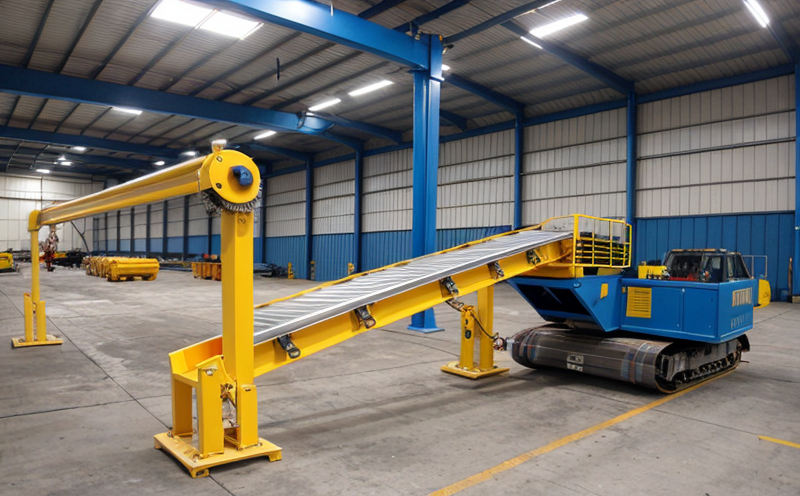ASTM D378 Adhesion Testing of Conveyor Belt Plies
The ASTM D378 adhesion test is a critical procedure used in mining testing, specifically for assessing the bond strength between layers (plies) of conveyor belts. This test ensures that conveyor belt components are robust enough to withstand the harsh conditions found within mines and other industrial environments where such equipment operates continuously.
Conveyor belts play a vital role in mine operations by facilitating the efficient transfer of materials over long distances. The integrity of these belts is essential for both operational safety and productivity. Adhesion failures can lead to unexpected downtime, increased maintenance costs, and even catastrophic failure during operation. ASTM D378 provides a standardized method to ensure that each ply adheres securely to the belt structure, thereby enhancing overall reliability.
The test involves applying a specified force over a defined area to simulate real-world stresses encountered by conveyor belts in mining operations. This forces are applied until the bond between plies begins to fail, at which point the amount of stress is measured and recorded. The results provide valuable insights into the durability and quality of the belt's construction.
Proper adhesion testing ensures that mining equipment meets stringent safety standards set forth by regulatory bodies like ASTM. By adhering to these guidelines, mines can operate with confidence knowing they are using high-quality materials that will perform reliably under demanding conditions.
In summary, ASTM D378 is more than just a laboratory procedure; it represents an important step in maintaining the integrity of mining infrastructure. Through rigorous testing, operators and manufacturers alike can identify potential weaknesses early on, allowing for timely intervention before issues arise during actual use.
Applied Standards
| Standard | Description |
|---|---|
| ASTM D378 | Method for Determining the Adhesion of Vulcanized Rubber Plies in Conveyor Belts. |
Benefits
- Ensures high-quality construction by verifying that all plies adhere properly to each other.
- Promotes longer-lasting conveyor belts, reducing maintenance needs and operational disruptions.
- Meets regulatory requirements ensuring compliance with industry standards.
- Provides data useful for continuous improvement of manufacturing processes.
International Acceptance and Recognition
The ASTM D378 adhesion test is widely accepted and recognized globally due to its rigorous methodology which accurately measures the bond strength between plies in conveyor belts. This standard has been adopted by numerous countries and organizations involved in mining, manufacturing, and quality assurance sectors worldwide.
Many regulatory bodies around the globe rely on ASTM D378 as a benchmark for ensuring safety and performance of industrial equipment like conveyor belts used in mines. Its universal applicability makes it an essential tool for any organization dealing with heavy-duty rubber products requiring exceptional durability and reliability.





